“Look at this tree!” I passed the image to my friend. It was a blustery, rainy day, and a good time to sit indoors and plan our next gardening adventure. I was looking for unusual trees to add to my ever-expanding forest, though I knew many of the “unusual” trees wouldn’t do well in my growing area. Like the one I shared.
“It’s called the human face tree, or Jinmenju. I pointed to the fruit hanging from the branches. “Look at those faces. They’re laughing at us.”
She handed back the image, then showed me another unusual tree. Standing in a grove, the tall, grotesque shape was a surreal image.
“It looks human!” I gasped.
She nodded. “It’s called a Balkan beech tree and it exists in a forest in Bulgaria. And …” she switched to another image, dragging out the suspense. “There’s a forest in Poland called the Crooked Forest, because all its trees grow in the shape of the letter J.”
“Wow! Truly amazing, aren’t they?”
Trees have an important function in the world’s ecosystem. Unfortunately, we often take them for granted and abuse the forests. Trees make excellent shade, photo ops, and sheltered places to hike or to hide. We’ve come to expect trees to be tall and straight with some sort of green foliage, either deciduous or evergreen. Some trees are used to decorate for celebrations, some trees are sculpted into works of art (topiary), and some produce edibles for humans and animals.
In all the wonderous world of trees, it’s not surprising to learn that Mother Nature has her own ideas on what makes an intriguing, unique tree.
Around the world, there are trees that are naturally (or unnaturally) shaped into unusual images, including some that look like an alien implantation. There are weird trees, downright scary trees, and a tree that shoot spikes and has exploding fruit. There’s the baobab tree, the dragon tree, there are trees that wrap themselves around buildings like the silk cotton tree, and there are trees that look like humans or animals, like the human face tree.
Psychologists, however, argue that seeing faces or images in trees correlates to creativity and cognitive sensitivity, something that, apparently, we’re all born with.
Forests Containing Weird Trees
Crooked Forest
Oddly shaped pine trees near the village of Nowe Czarnowo in northwestern Poland attract visitors to what is now a protected natural monument. Known as the Crooked Forest, or Krzywy Las, this grove of some 400 pines was planted in the 1930s. The trees bend sharply north, just above the ground, before curving upright for about 3 to 9 feet, and then straighten upward, forming what looks like the letter J if viewed from the east. The grove of unusually shaped pines is surrounded by a forest of straight pine trees. No one knows for sure what phenomenon caused this unusual grove of trees. Some suggest a heavy snowstorm bent the young trees. Others suggest that local farmers intentional bent the younger trees to create the naturally curved timber they used in building furniture or boats. The forest has gained international notoriety, having been featured in the TV series “The UnXplained” (History Channel, 2019).
Dancing Forest
Another unusual forest is the Dancing Forest (Tantsuyushchiy les in Russian), a pine forest in Kaliningrad Oblast. Here the unusually twisted pine trees are not a uniform J-shape as in the Crooked Forest, but rather, the trees are randomly shaped in patterns such as rings, hearts and spirals, all bending to the ground, giving the impression of a forest of dancers. Once again, this anomaly has no known cause. Some suggest a caterpillar invasion. Others refer to a folk version that the Dancing Forest follows the movement of the sand at its base.
Drunken Forest
There’s also a forest called the Drunken Forest because of its tilted trees. The most common examples of Drunken Forests are found in the northern subarctic taiga forests of black spruce trees. Located south of the Arctic Circle, this area exists between the northern tundra and the more temperate forests to its south, mostly in Alaska, Canada, Scandinavia and Siberia. As the discontinuous permafrost melts, the ground heaves, causing the trees to tilt at precarious angles. Landslides, earthquakes, rock glaciers, and earthflows can result in the tilting trees. However, one could easily give this label to many other forests around the world as the weather events that caused this anomaly are seen more frequently and natural disasters play havoc on our forests.
Some of the Weirdest Trees
Forest groves may sport unusual trees in abundance, but there are specific species that are weird on their own.
Human Face Tree
I think the eeriest example of a weird tree is the human face tree, also known as Jinmenju. Fact or fiction, myth or legend? There’s enough evidence that the tree existed (and perhaps still exists) to suggest it’s real.
With dangling fruit that looks like medallions with facial images implanted on them, the tree oozes creepy vibes. Imagine hundreds of tiny faces looking at you. Added to the creepy is the fact that every head appears as if it’s constantly laughing at you. And if the fruit laughs too hard, it falls from the tree. The fruit, which ripens in the fall, is edible, with a sweet and sour taste. In fact, even the seed has a human face, complete with eyes, ears, nose and mouth. Shudder. Found in the south of China and Japan, there are legends surrounding this tree — legends as strange as the tree itself. Count yourself lucky if you ever find one of these trees.
Dragon Tree
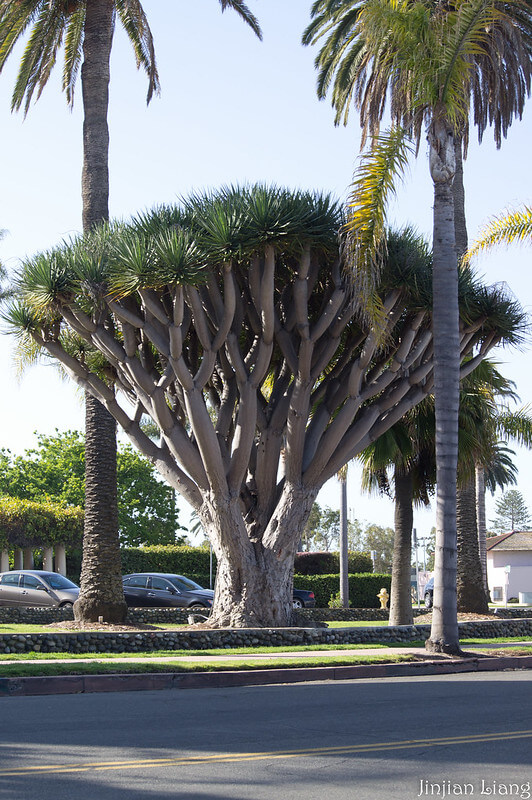
There’s a tree that grows on the Canary Islands that’s called the dragon tree (Dracaena draco). It looks like a huge umbrella that you’d enjoy sitting under to appreciate the shade on a hot summer day.
The fruit of this tree was once the food for a flightless bird which is now extinct. As they ate the fruit, they spread the seeds around, increasing the number of trees. However, with the bird in extinction, the spread of the dragon tree’s seeds is dwindling, too, and this tree, dating back almost 1,000 years, is almost extinct.
Baobab Tree
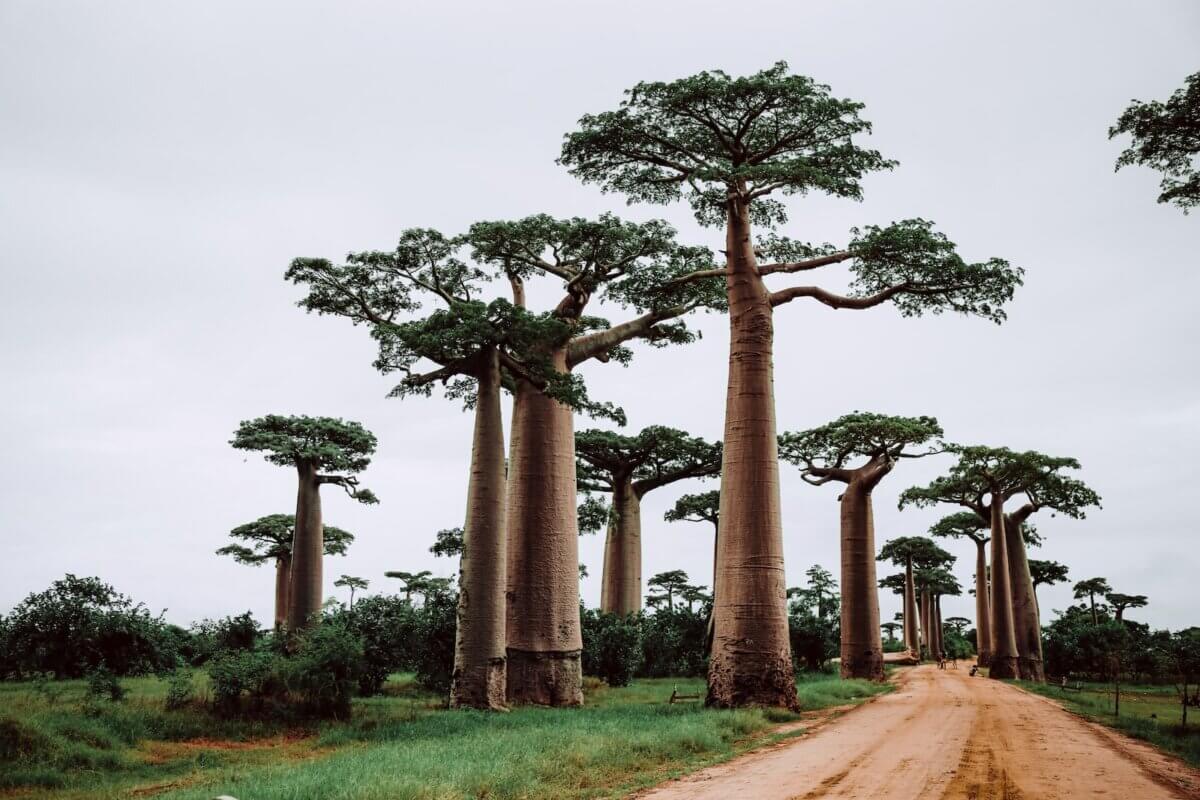
A tree that is 1,000 years old with an unusual shape is called the baobab tree. It also has an umbrella-like top, but not quite as dramatic as the dragon tree.
Silk Cotton Tree
Another old tree (about 200 years old), the silk cotton tree (Ceiba pentandra), is another creepy tree. Its roots grow around and through just about anything. It’s not unusual to see silk cotton tree roots encompassing an entire building. Found in the Seam Ream Province of Cambodia, the tree grows straight up from its coiled roots at the base. The roots themselves are enough to spook anyone.
General Sherman Tree
There’s an old tree in the United States aptly named after an historic military figure. The General Sherman tree (Sequoiadendron giganteum), located in the Sequoia National Park in California, is thought to be between 2,300 and 2,700 years old! At a height of 275 feet and the circumference (when measured near the ground) of 102 feet, it is considered to be the oldest and largest of the single stem trees on Earth. Currently, that is, as there are larger trees that were felled in the 20th century.
With the raging California wildfires of recent years, it’s amazing that this tree has survived. When a lightning-caused fire burned upslope toward the General Sherman tree in 2021, firefighters wrapped the lower 10 to 15 feet of the trunk with a protective aluminum material often used to protect buildings and minimize damage from the fire. Giant sequoias are known to be fire-dependent and can withstand the heat of moderate fires because they have such a thick bark. However, more severe fires can damage and destroy these trees.
Tree of Tule
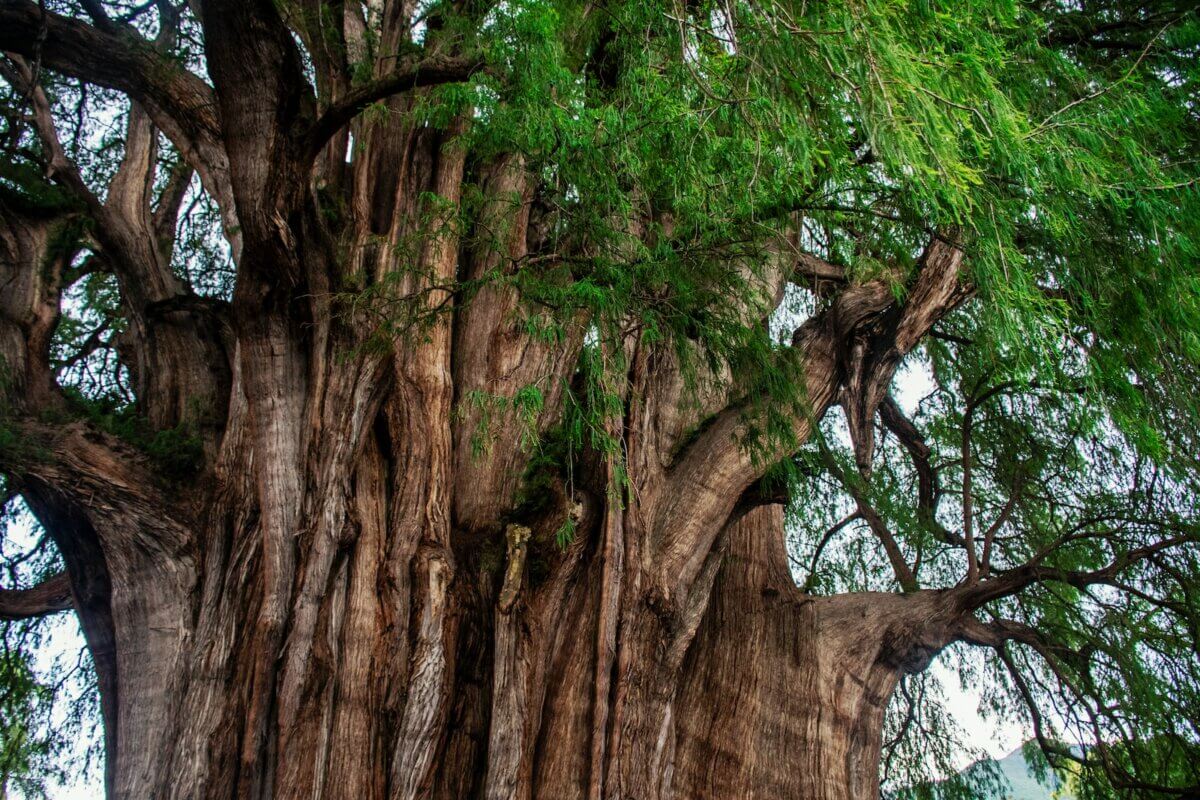
There is a tree in Oaxaca, Mexico that has a massive circumference and is one of the stoutest trees and oldest (somewhere between 3,000 and 6,000 years old) in the world. The trunk of the Tree of Tule, El Árbol del Tule (Taxodium mucronatum) is 32 feet in diameter and its height is 111 feet. Called the tree of life, the tree’s gnarled trunk appears to be images of various animals like jaguars and elephants. Local schoolchildren will give tourists a tour of the tree, pointing out these various animal shapes.
Dynamite Tree
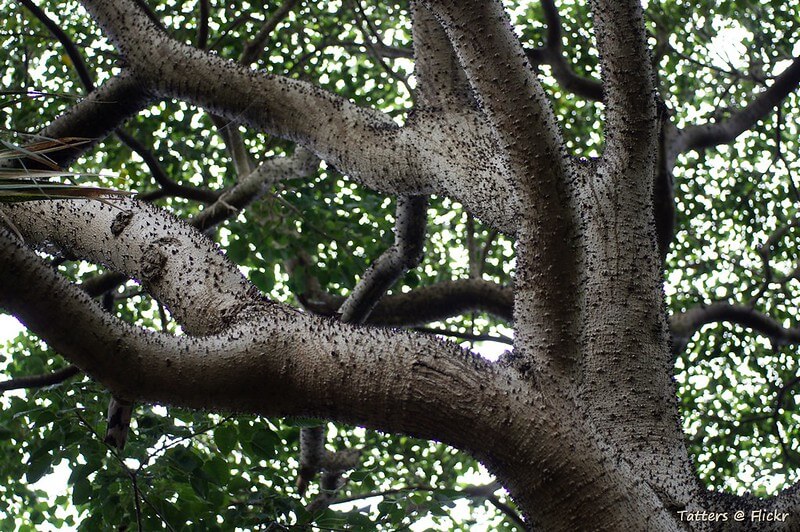
Of the weirdest trees in the world, the one that stands out as being the most dangerous is the sandbox tree, or the dynamite tree.
Banyan Tree
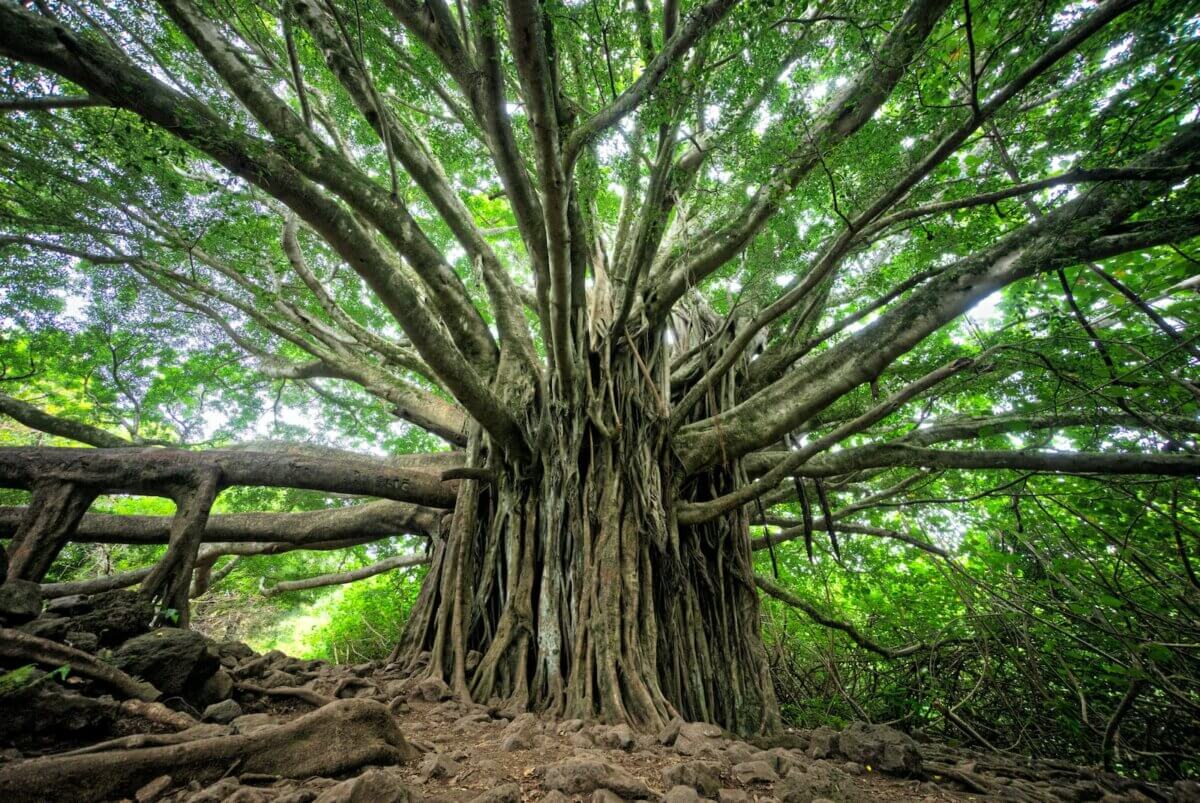
Imagine a tree that appears to have snakes dangling from its branches. That’s the Banyan tree (Ficus benghalensis). Found in India, this tree may look creepy, but it is considered holy and sacred. The leaves are believed to be the final resting place of Lord Krishna. In at least one region in India, married women fast for Vat Savitri Vrat; a time when they worship the Banyan tree by tying a thread around it. The national tree of India, some Banyan trees have been dated to be about 1,000 years old.
Quiver Tree
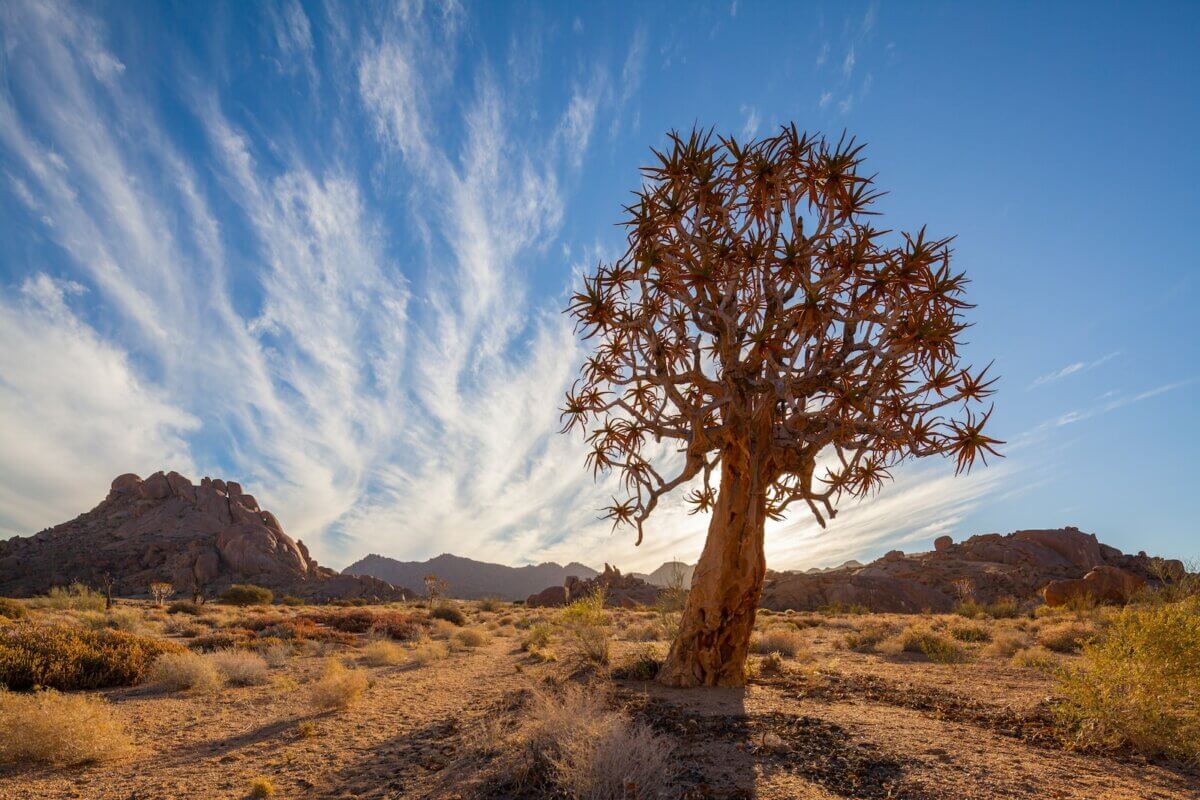
You may think the quiver tree (Aloidendron dichotomum) gets its name because it quivers and shakes. I know that was my first thought. Apparently, however, the quiver tree, or choje, kokerboom — a tree of many names — is called the quiver tree because the local people hollow out the tubular branches to make quivers for their arrows.
The tree is found in the Northern Cape province of South Africa and southern Namibia. It grows well in arid conditions, but it doesn’t do particularly well outside its natural habitat. With smooth bark and gray-green leaves, the tree measures about 3 feet in diameter at its base. It blooms during the winter season, which in South Africa is June and July, with striking yellow flowers. The locals consider this tree to be a good luck tree. It is believed that if one dug up a quiver tree, that person would have a lifetime filled with diamonds. However, the tree is considered blessed, so no one wants to dig up the tree. Instead, they worship and nurture it for good luck.
Kauri Tree
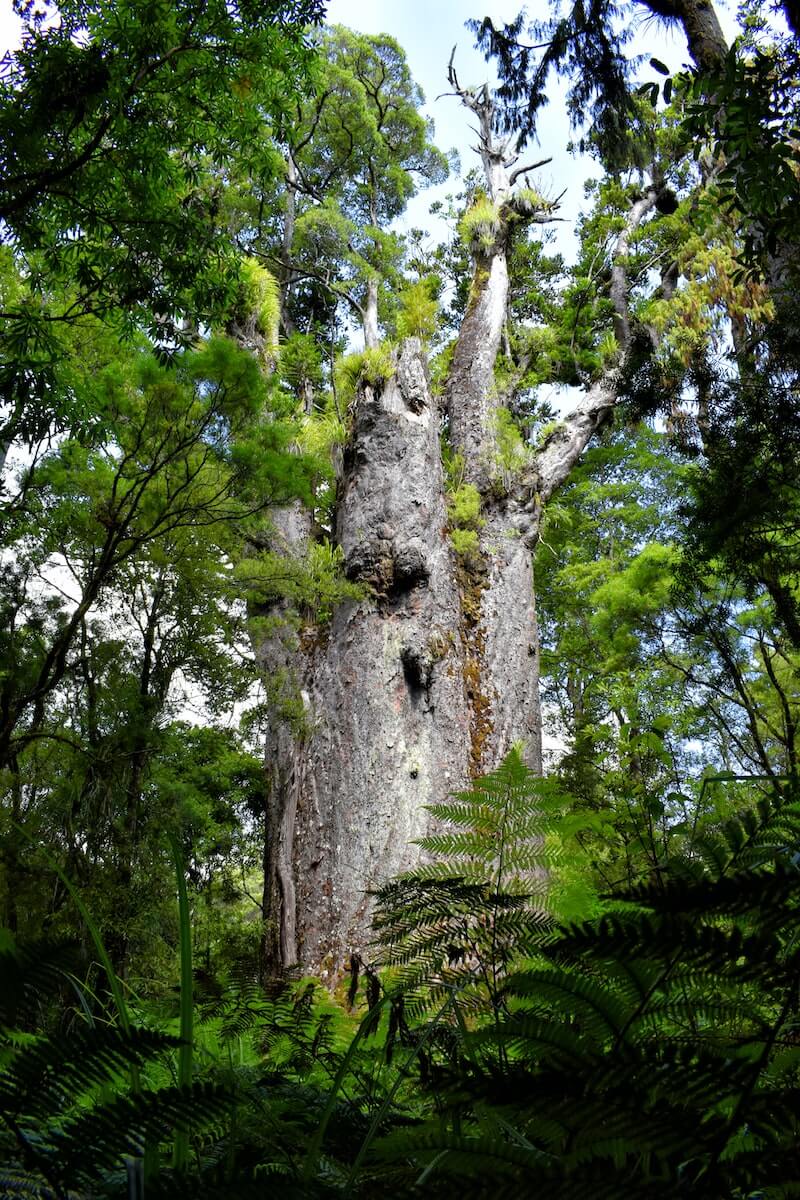
The Kauri tree (Agathis australis), found in New Zealand, is one of the world’s mightiest trees. Growing to heights of over 150 feet with trunks up to 50 feet in diameter, these trees live over 2,000 years. Certainly, the size of its trunk alone rivals the size of sequoia trees in California. With an imposing crown at amazing heights, the tree definitely dominates the rest of the forest. Its bark flakes profusely as the tree defends itself from parasitic plants. This flaking bark accumulates around the base of the tree, the pile of flakes bark sometimes reaching a height of more than 6 feet.
Other Weird Trees
Another species of the silk cotton tree is found in the American tropics. It’s actually one of the largest trees in this area. The tree grows quickly, reaching heights of 80 feet or more and a diameter of up to 8 feet above the buttresses. The buttresses are immense, extending as much as 10 feet from the main trunk. The tree has many useful purposes including the cottony fibers found in the fruit which is used for insulation, padding sleeping bags and life preservers, and stuffing pillows and mattresses. The trunk of the tree can be hollowed out in one piece to make large canoes. Its appearance in itself is weird but it’s really the myths surrounding this tree that make it creepy. The silk cotton tree forests are full of spirits of the dead that commune with bats.
In Bahrain, there is a 400-year-old tree that has survived just as long without water. Now, you may ask how that is possible. Good question, but what makes it even more unique is that it lives at a high altitude in a location no one lives. It’s called the tree of life (Prosopis cineraria), and the locals claim it is the place of the original Garden of Eden. With long roots that stretch over 150 feet deep into the ground (probably the means by which it obtains its water to survive), it has an abundance of green leaves. The only major tree growing in this area (and the oldest one), has a practical purpose. Its yellow resin is used to make candles and gum, and the beans are made into meal, jam, and wine. Its life source is more mystical than realistic given its supposed connection to Garden of Eden.
When Humans Creatively Alter Nature
Mother Nature is the ultimate artist, but humans have added their creative minds to unusual tree art. The ancient art of topiary has transformed trees and shrubs into works of art of mammoth dimensions (https://insteading.com/blog/garden-topiary-hedges/). Tree shaping, topiary, whatever it’s called, has been around for hundreds of years. People use Mother Nature’s finest to create not only works of art, but functional pieces of furniture and structures like the living root bridges built in India. Be that as it may, no one can truly best Mother Nature, the supreme artist and practitioner.










































Leave a Reply